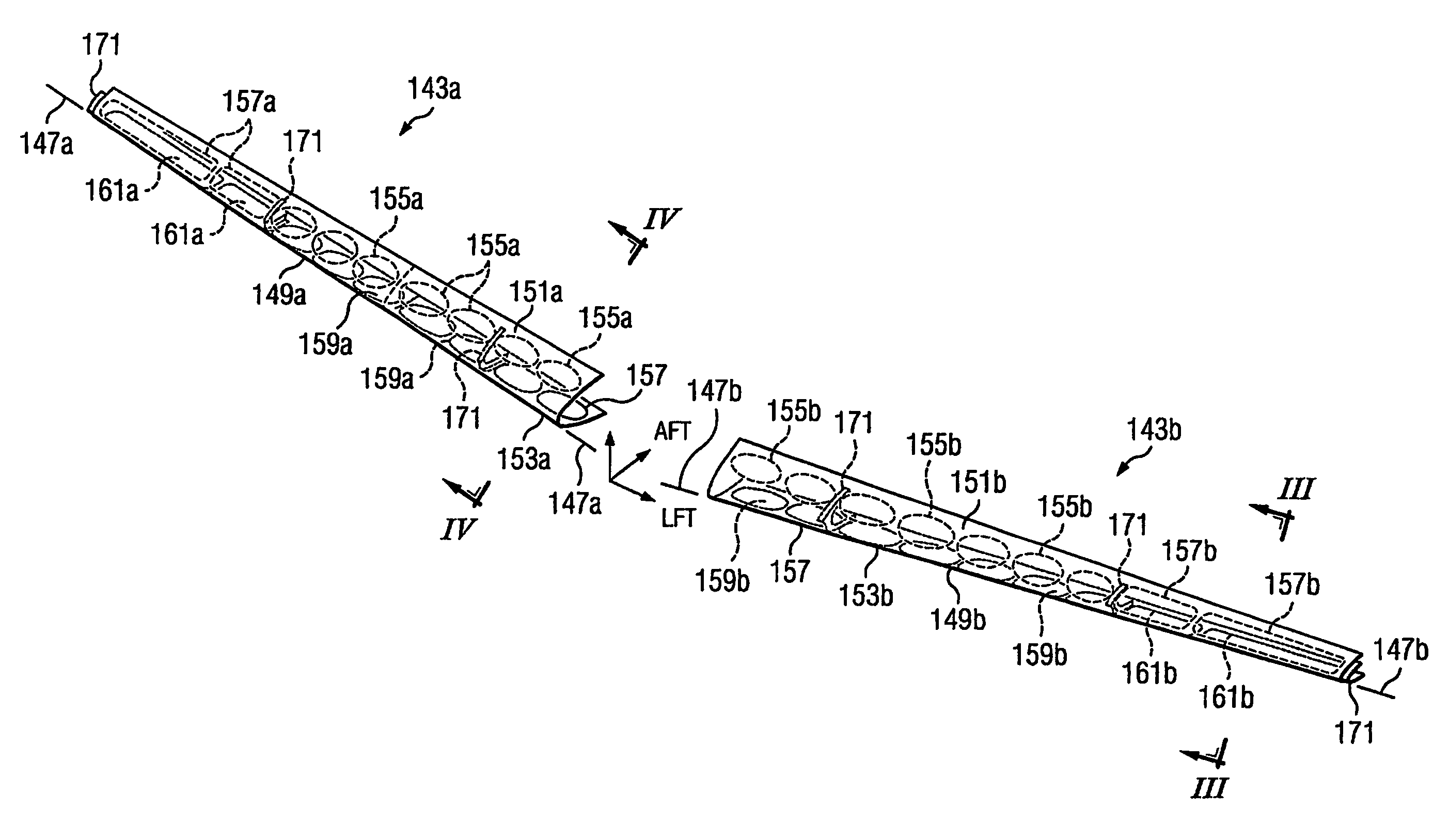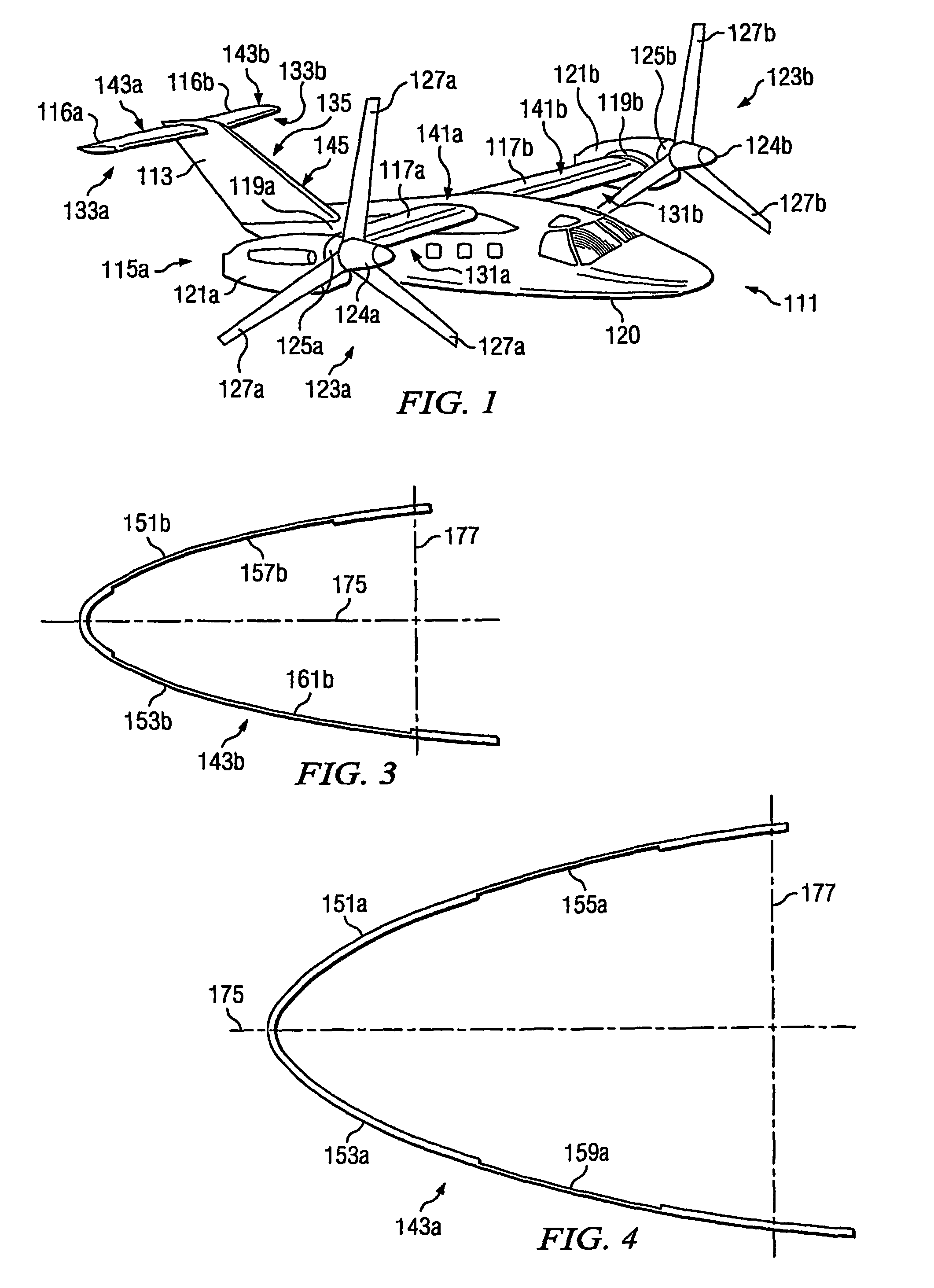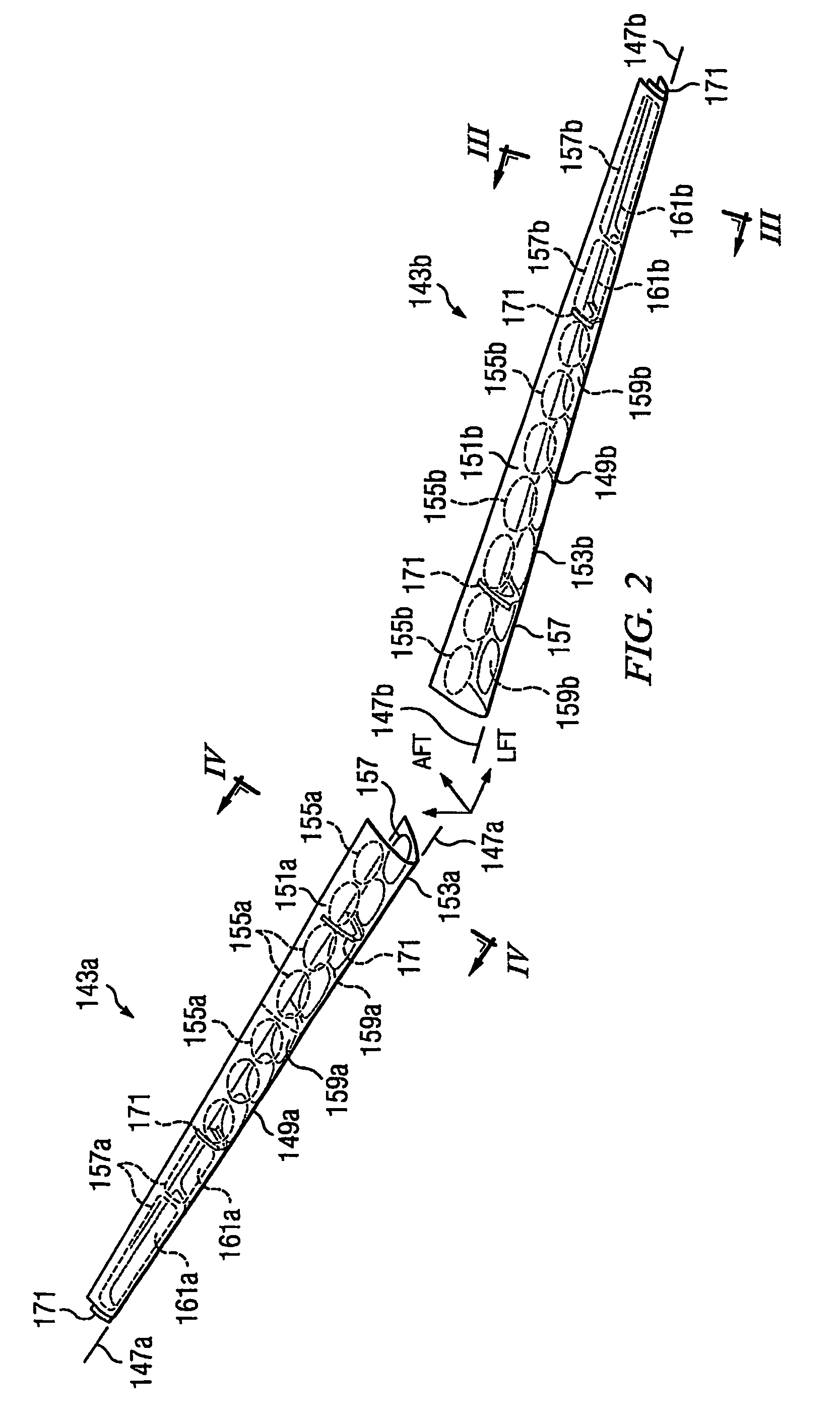Protective skin for aircraft
a protective skin and aircraft technology, applied in the field of aircraft skins, can solve the problems of affecting the flight path, and the damage to the edge of the wings and stabilizers, so as to minimize the damage from collisions, reduce the damage of collisions, and increase the rigidity
- Summary
- Abstract
- Description
- Claims
- Application Information
AI Technical Summary
Benefits of technology
Problems solved by technology
Method used
Image
Examples
Embodiment Construction
[0016]The present invention involves a method and apparatus for protecting the substructure of an aircraft from damage due to leading edges impact with flying objects, such as birds. Although the present invention will be described with reference to a tiltrotor aircraft, it will be appreciated that the present invention may be used on any type of aircraft in which it is desirable to provide such protection.
[0017]Referring to FIG. 1 in the drawings, a tiltrotor aircraft 111 having a protective skin according to the present invention is illustrated. Tiltrotor aircraft are unique rotorcraft in that they have tiltrotor assemblies that operate between a helicopter mode in which the tiltrotor assemblies are rotated upward allowing the tiltrotor aircraft to take off, hover, fly, and land like a conventional helicopter; and an airplane mode, in which the tiltrotor assemblies are tilted forward allowing the tiltrotor aircraft to fly like a conventional fixed-wing propeller driven aircraft. T...
PUM
 Login to View More
Login to View More Abstract
Description
Claims
Application Information
 Login to View More
Login to View More - R&D
- Intellectual Property
- Life Sciences
- Materials
- Tech Scout
- Unparalleled Data Quality
- Higher Quality Content
- 60% Fewer Hallucinations
Browse by: Latest US Patents, China's latest patents, Technical Efficacy Thesaurus, Application Domain, Technology Topic, Popular Technical Reports.
© 2025 PatSnap. All rights reserved.Legal|Privacy policy|Modern Slavery Act Transparency Statement|Sitemap|About US| Contact US: help@patsnap.com



